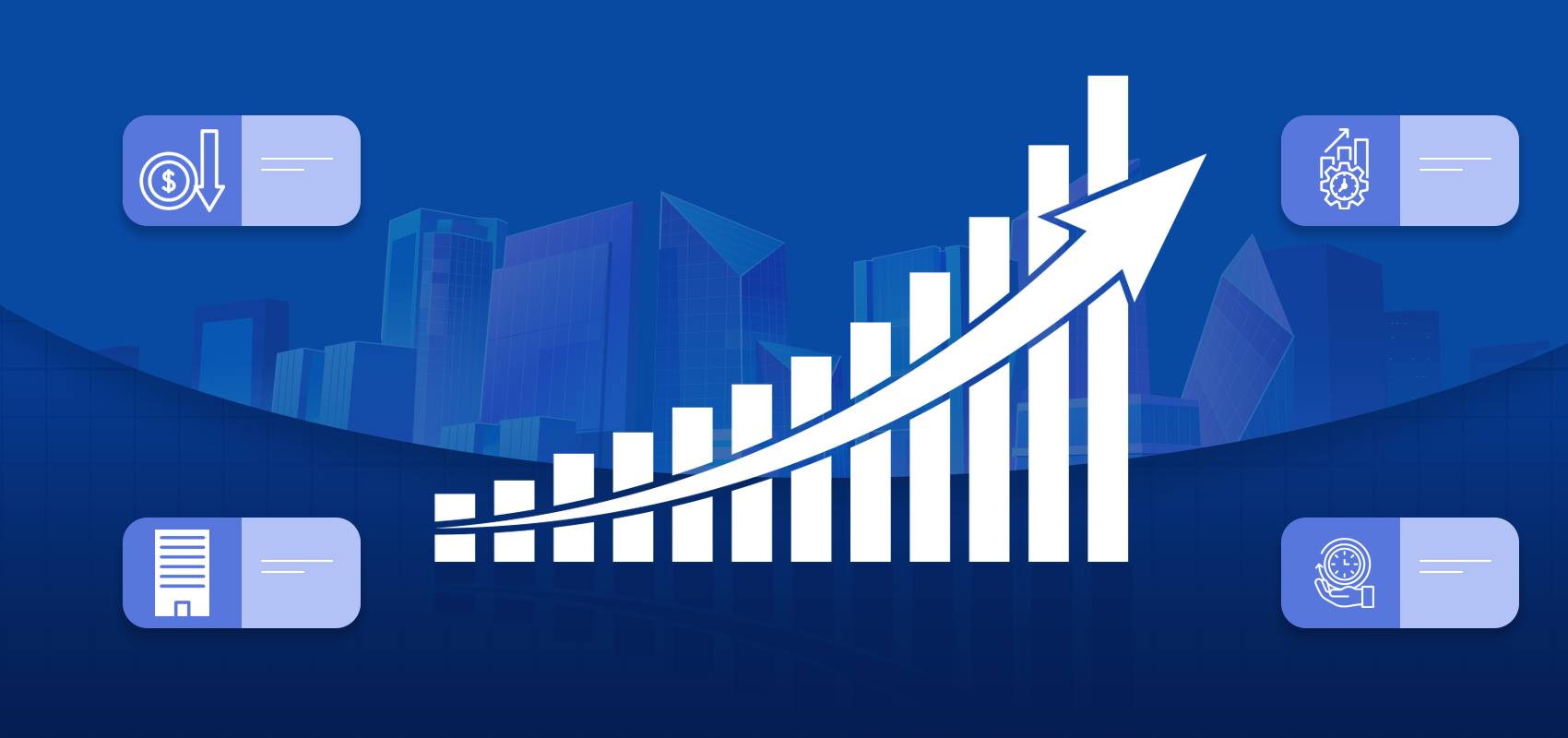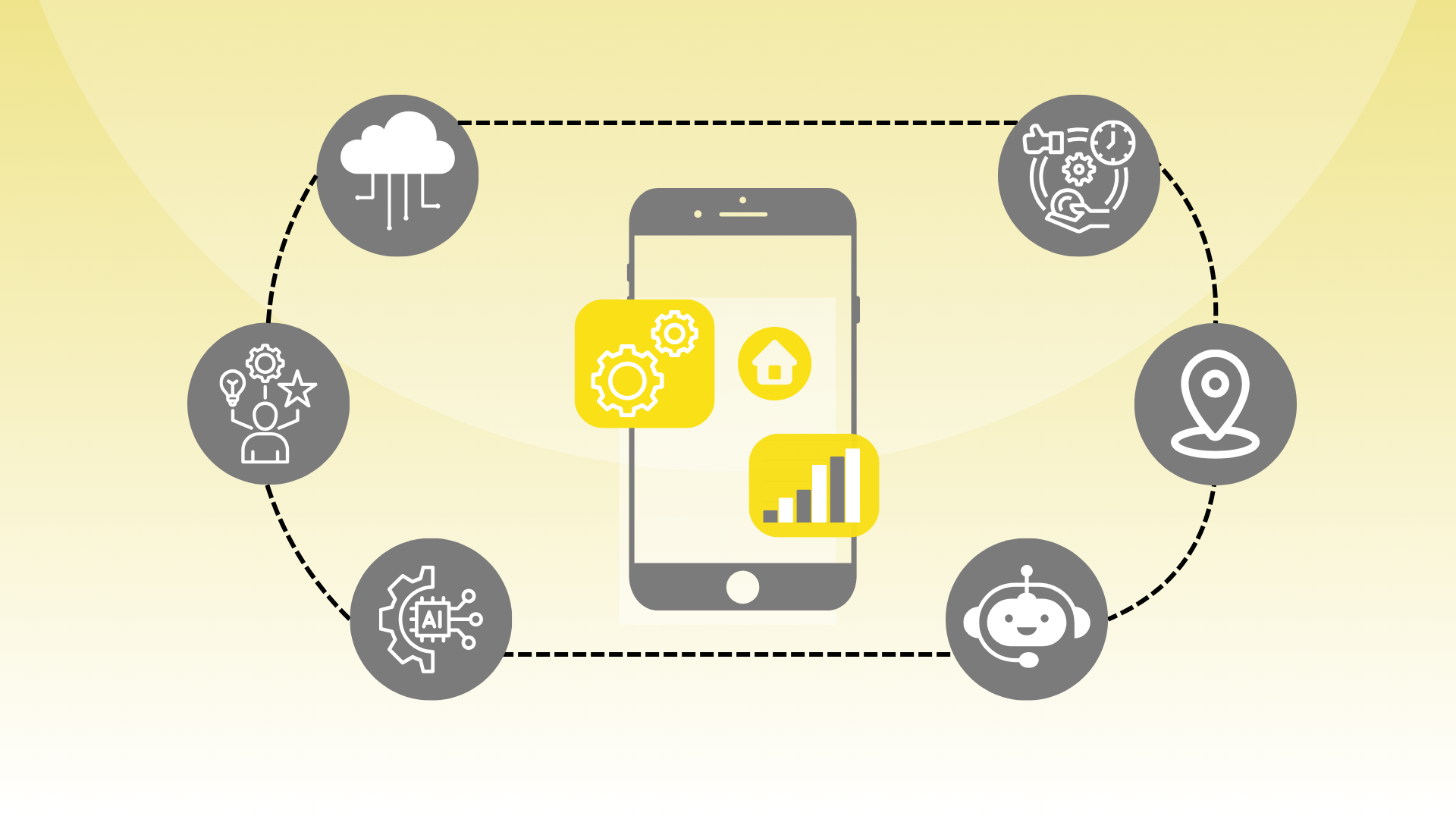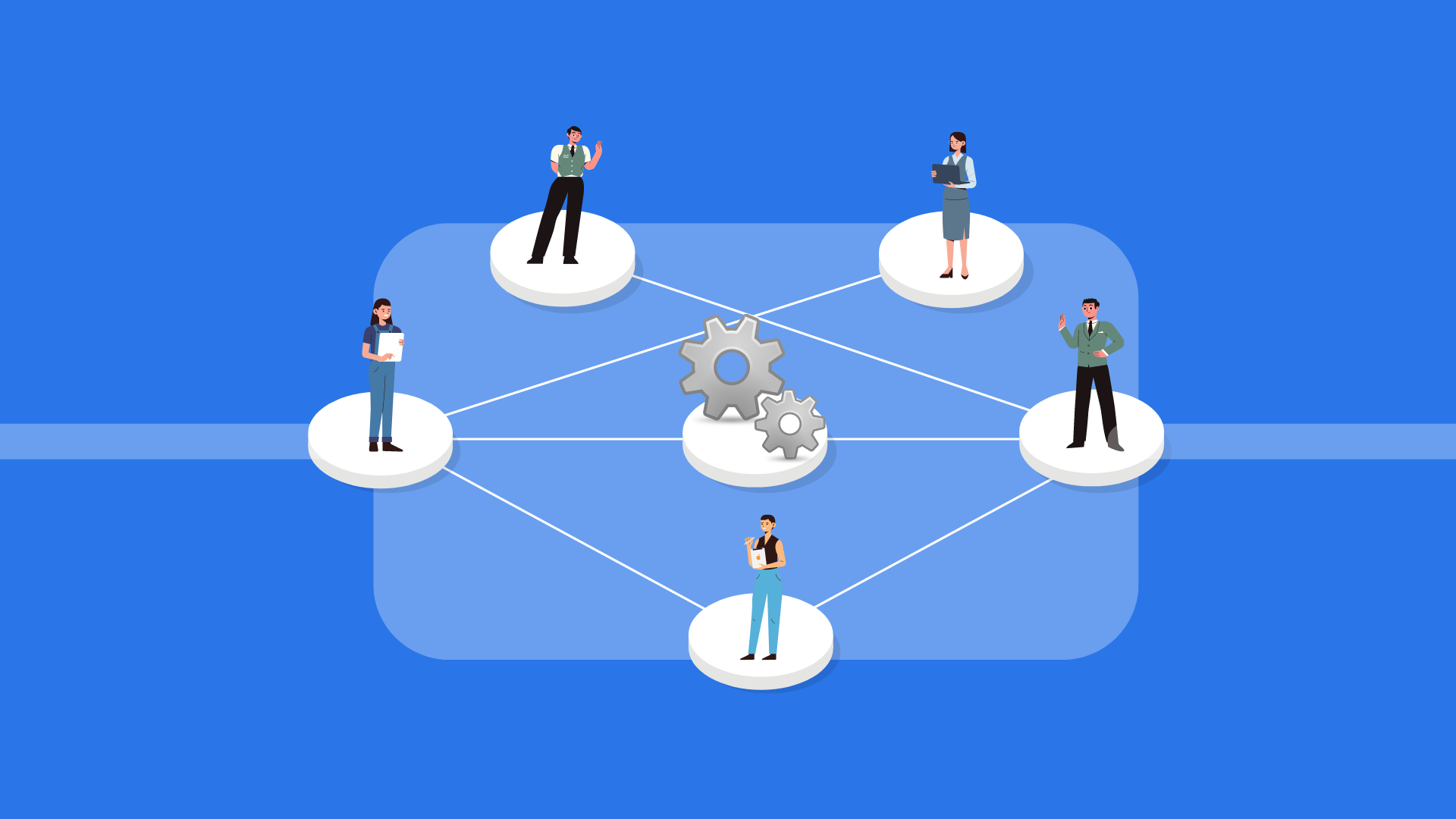Data-Driven Decision Making: Harnessing API Analytics for Business Insights
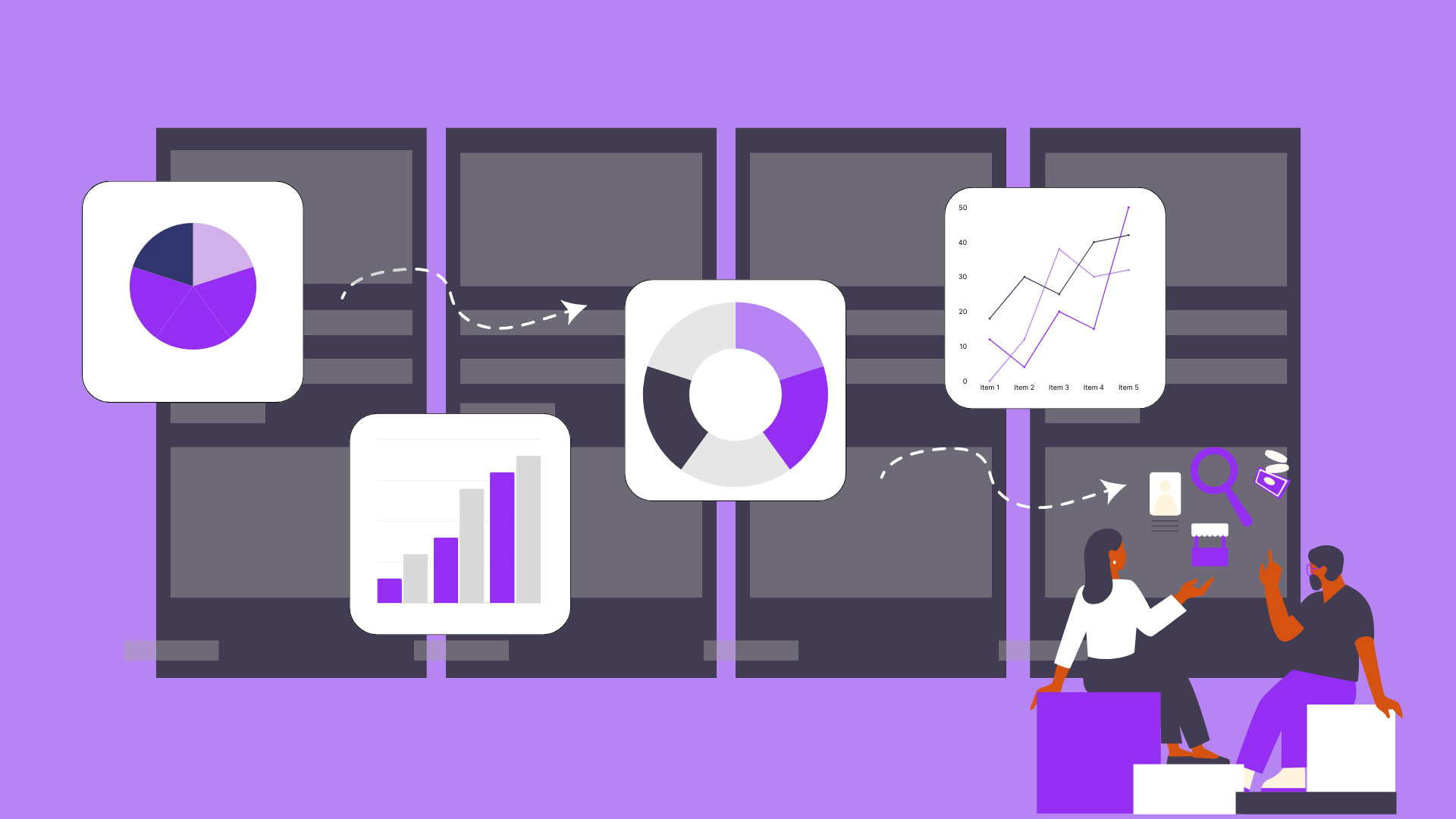
- 8 April 2024
- Blog
- 0 Comments
Imagine the frenzy of activity during the Black Friday Cyber Monday (BFCM) period—consumers
flooding online platforms, hunting for the best deals, and making purchases at unprecedented rates.
For businesses navigating this digital shopping extravaganza, ensuring seamless operations and
optimal user experiences is paramount. This is where the power of API analytics comes into play,
providing invaluable insights into user behavior, performance metrics, and usage patterns that
drive informed strategic decisions.
APIs (Application Programming Interfaces) serve as the backbone of modern digital operations, facilitating seamless communication between different software systems. Every API call, every transaction, and every user interaction generates a wealth of data. By dissecting this data, businesses can uncover trends, identify bottlenecks, and make data-driven decisions to optimize their digital strategies, making it a litmus test for businesses’ digital infrastructure.
APIs (Application Programming Interfaces) serve as the backbone of modern digital operations, facilitating seamless communication between different software systems. Every API call, every transaction, and every user interaction generates a wealth of data. By dissecting this data, businesses can uncover trends, identify bottlenecks, and make data-driven decisions to optimize their digital strategies, making it a litmus test for businesses’ digital infrastructure.
What is API Analytics?
Acquiring a deeper understanding of the ongoing business and technical impact of your APIs
requires robust API analytics.API Analytics is just one step in an API life cycle. Which involves a sophisticated analysis of API
usage patterns and efficiency metrics. By examining key metrics such as call frequency, response
times, error rates, and user engagement, API Analytics provides organizations with valuable
insights into how their APIs are being utilized. This deeper understanding allows businesses to,
- Understand User Behavior: Utilize API analytics to gain insights into user behavior, such as preferences, interactions, and engagement patterns, empowering businesses to tailor their strategies accordingly.
- Measure Performance Metrics: Employ API analytics to track key performance metrics like response times, latency, and error rates, enabling businesses to ensure optimal API performance and identify areas for improvement.
- Analyze Usage Patterns: Leverage API analytics to analyze usage patterns, including peak usage times, popular features, and geographic trends, to inform strategic decisions and resource allocation.
- Drive Informed Strategic Decisions: By harnessing insights from user behavior, performance metrics, and usage patterns, businesses can make data-driven decisions that align with their strategic objectives and enhance overall effectiveness.
How does API Analytics work?
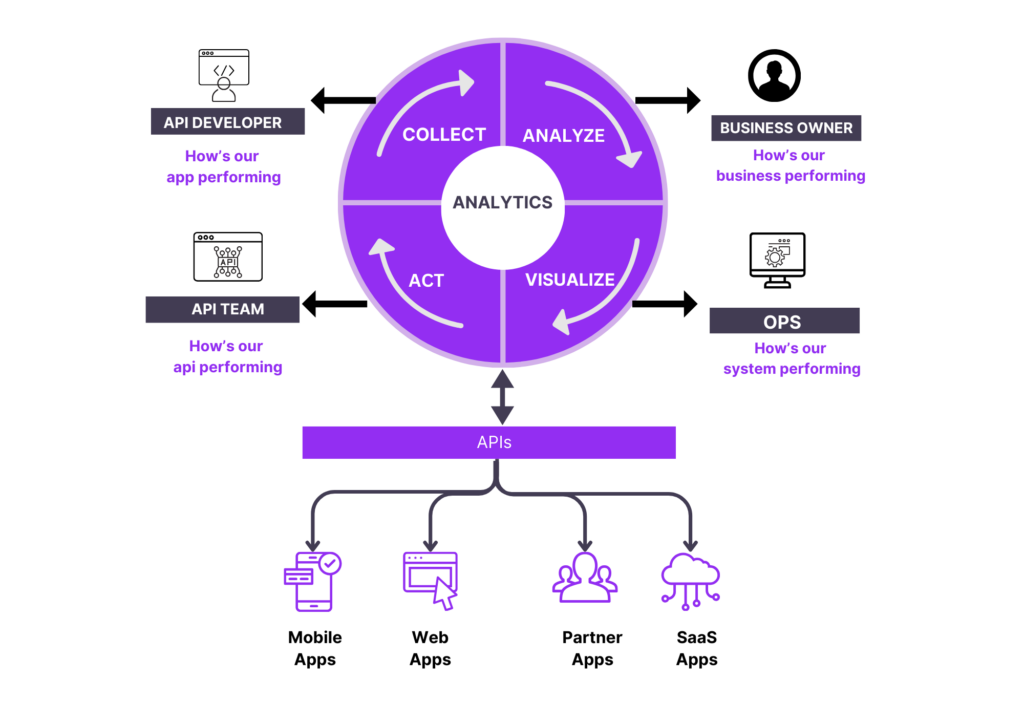
API Analytics operates by seamlessly integrating with an organization’s API infrastructure,
enabling the systematic collection of data from every API call. This integration is designed to be
non-intrusive, ensuring that the normal operation of APIs is not disrupted while comprehensive
data is gathered. The collected data encompasses a wide array of information, including but not
limited to, request and response headers, payloads, authentication methods, and the frequency of
API calls. This data forms the foundation upon which API Analytics builds its insights.
After data collection, it is subjected to a thorough and detailed analytical process. Tools used in API Analytics are equipped to handle vast amounts of data, sorting and analyzing it to construct a detailed picture of the API landscape. This analysis is not just limited to basic metrics; advanced analytics solutions employ sophisticated techniques like machine learning algorithms. These algorithms can detect patterns and trends that may not be instantly recognizable. They can predict future usage trends, detect anomalies that could indicate issues like security breaches or system failures, and provide insights into user behavior. This level of analysis transforms raw data into actionable insights, enabling businesses to optimize their APIs and align them more closely with their strategic goals.
Once the data is analyzed, API Analytics translates the insights into actionable information for various stakeholders. For API developers and the API team, it provides detailed reports on API performance, usage patterns, and potential issues, enabling them to fine-tune the APIs and enhance the developer experience. Business owners benefit from strategic insights derived from API usage data, guiding them in making informed decisions to drive business growth and innovation. Operations teams receive real-time operational metrics and alerts, empowering them to proactively manage API performance and security, minimizing risks, and ensuring smooth operations.
After data collection, it is subjected to a thorough and detailed analytical process. Tools used in API Analytics are equipped to handle vast amounts of data, sorting and analyzing it to construct a detailed picture of the API landscape. This analysis is not just limited to basic metrics; advanced analytics solutions employ sophisticated techniques like machine learning algorithms. These algorithms can detect patterns and trends that may not be instantly recognizable. They can predict future usage trends, detect anomalies that could indicate issues like security breaches or system failures, and provide insights into user behavior. This level of analysis transforms raw data into actionable insights, enabling businesses to optimize their APIs and align them more closely with their strategic goals.
Once the data is analyzed, API Analytics translates the insights into actionable information for various stakeholders. For API developers and the API team, it provides detailed reports on API performance, usage patterns, and potential issues, enabling them to fine-tune the APIs and enhance the developer experience. Business owners benefit from strategic insights derived from API usage data, guiding them in making informed decisions to drive business growth and innovation. Operations teams receive real-time operational metrics and alerts, empowering them to proactively manage API performance and security, minimizing risks, and ensuring smooth operations.
Why Use API Analytics?
Curious about companies using API analytics to improve their performance and user experiences
in real time?
- Shopify utilizes API analytics to gain real-time visibility into website performance, transaction volumes, and customer behavior, enabling optimization of website performance and effective resource allocation to meet demand spikes.
- Netflix relies on sophisticated API analytics tools to track viewer engagement, content consumption patterns, and device preferences in real-time, informing content recommendations and strategic decisions around content acquisition and platform optimization.
- AccuWeather proactively monitors API traffic and leverages analytics capabilities to precisely track transactions, monitor response times, and understand traffic-driving products or services, demonstrating the transformative power of API analytics in weather forecasting.
- Amadeus, a global travel technology company, gains detailed insights into API usage, transaction volumes, and response times, informing internal decision-making and enabling the company to stay ahead of industry trends in the competitive travel market.
Types of API Analytics Reporting:
API Analytics offers various types of reporting, each providing specific insights essential for API
management and optimization. These include usage reports, performance reports, error reports,
and user behavior reports, enabling organizations to monitor and improve their API ecosystem
comprehensively. Usage reports provide insights into how APIs are being utilized, while
performance reports focus on efficiency metrics such as response times and throughput. Error
reports help identify and diagnose issues within the API infrastructure, while user behavior reports
offer insights into user engagement and preferences.
API Analytics Metrics:
Key metrics such as API calls, response times, error rates, user adoption rates, and throughput
offer valuable insights into the usage, performance, and efficiency of APIs. By tracking these
metrics over time, organizations can identify trends, pinpoint areas for improvement, and optimize
their API infrastructure to deliver exceptional digital experiences to their users. Additionally, API
Analytics metrics enable organizations to measure the impact of changes and enhancements to
their API ecosystem, ensuring continuous improvement and innovation.
Conclusion:
In conclusion, API Analytics has emerged as a critical tool for businesses operating in the digital
landscape. By providing insights into API usage, performance metrics, and user behavior, API
Analytics enables organizations to make informed decisions, optimize their API infrastructure, and
deliver exceptional digital experiences to their users. From understanding customer behavior to
ensuring the security and compliance of digital services, API Analytics offers a wide range of
benefits that are essential for maintaining competitiveness in today’s market.
Related Posts

Generate and scale business value through future-proof technology
- Guest Author
- 16 February 2023
Future-proofing your business is essential for surviving and thriving in the face of rapid tech ..
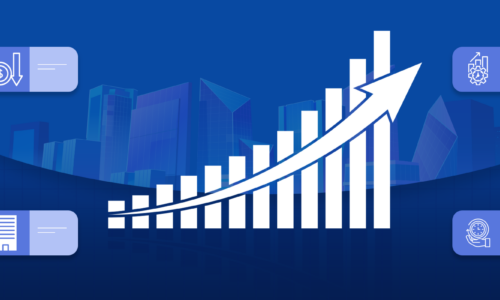
How Does the IoT Help Businesses
- Guest Author
- 11 January 2025
Internet of Things How Does the IoT Help Businesses? The Internet of Things (IoT) is revolution ..


